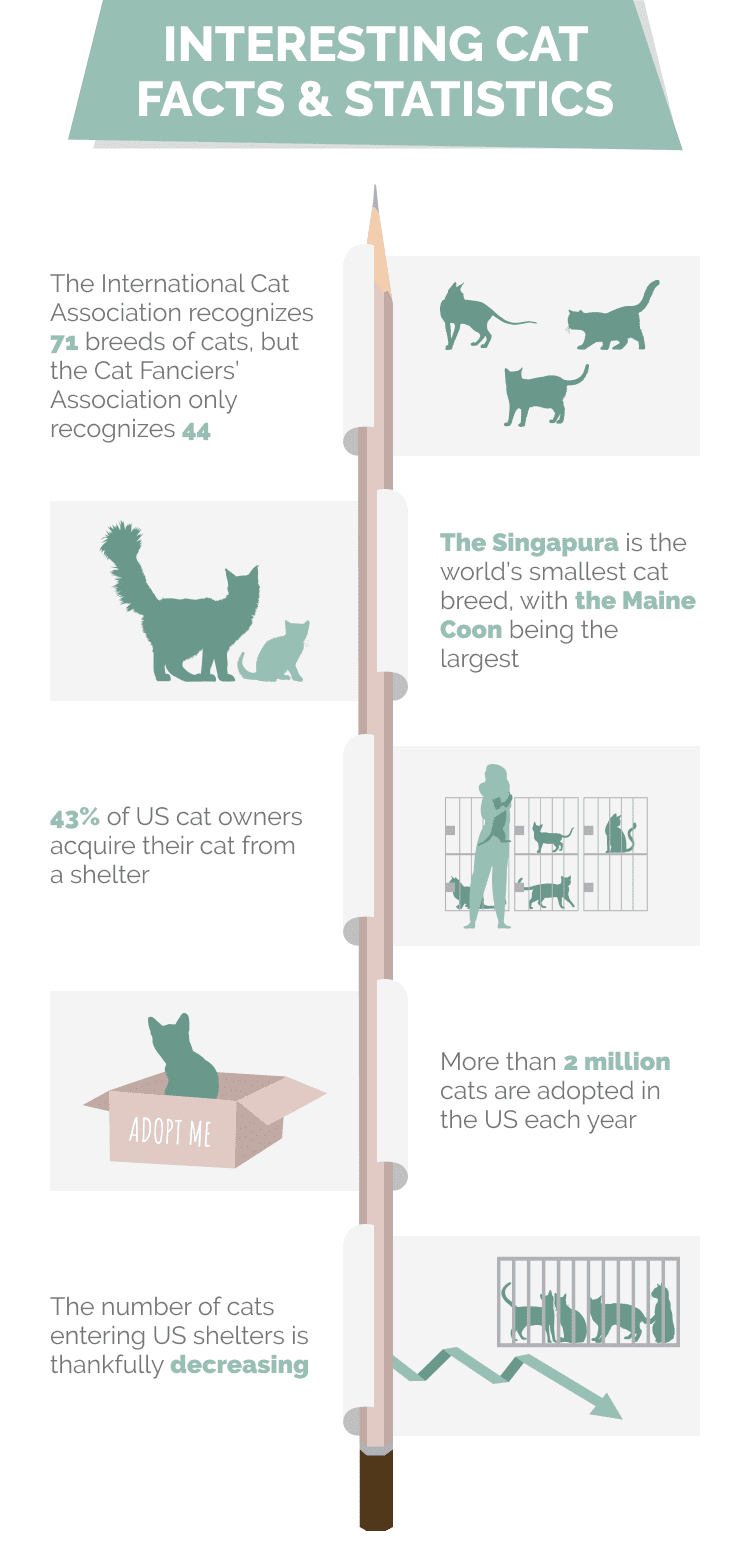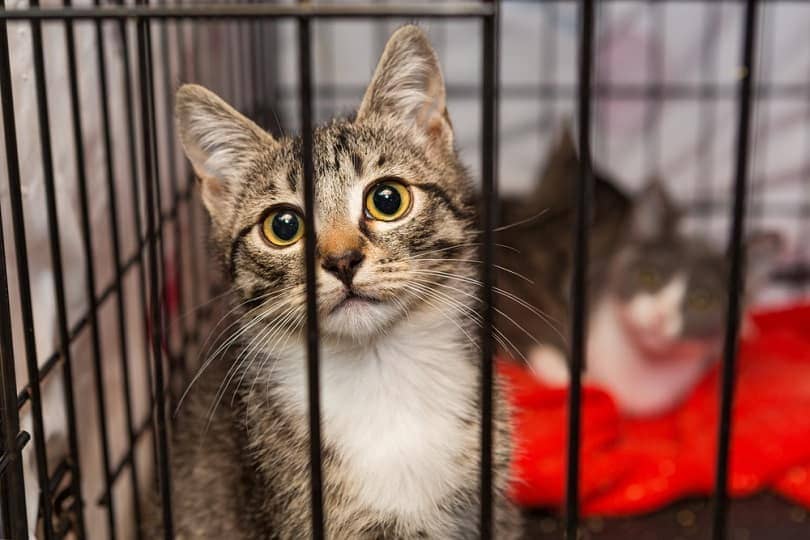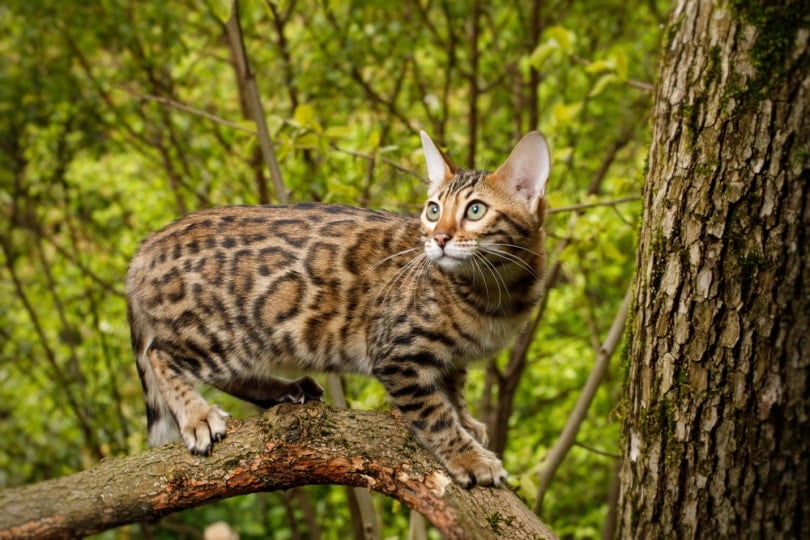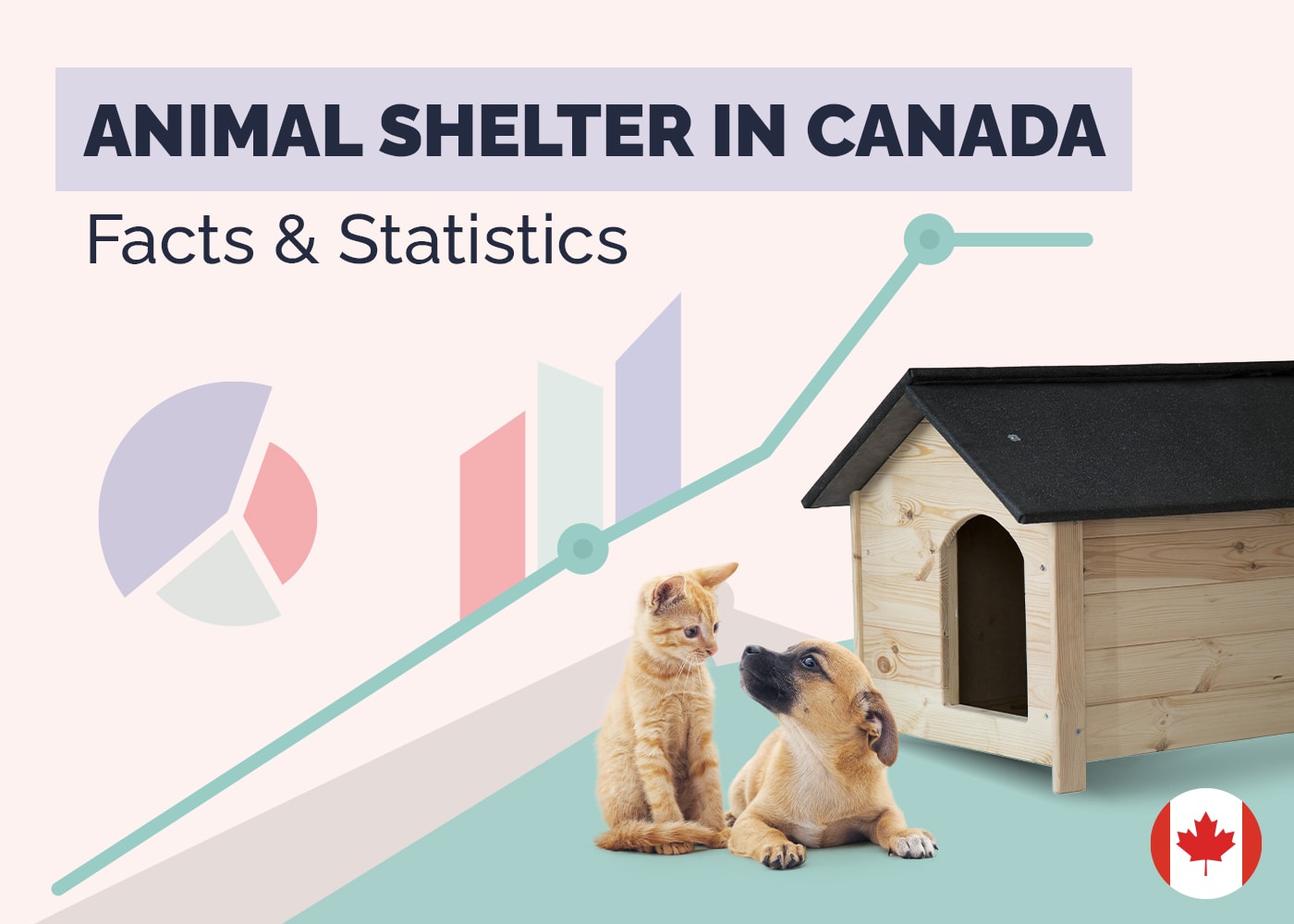14 Interesting Cat Statistics & Facts: Updated in 2024
By Ed Malaker
Updated on

Click to Skip Ahead
Note: This article’s statistics come from third-party sources and do not represent the opinions of this website.
Cats are wonderful pets that amaze us with their unusual behaviors and activities. There being many different breeds means it can be easy to select one. If you are wondering how many cats there are, read on for the answer to that question and several other facts and statistics about felines. We’ve broken the stats into the following categories
The 14 Cat Statistics
- There are 15–71 cat breeds, depending on whom you ask.
- The Singapura is the smallest cat breed.
- The Maine Coon is the largest cat breed.
- The number of homes with a pet is increasing.
- Most pet owners consider their pets a part of the family.
- The COVID-19 pandemic influenced many people’s decision to get a cat.
- The number of cats entering shelters is decreasing.
- Most pet owners acquire their cat at a shelter.
- More than 3 million cats wind up in the shelter each year.
- More cats are euthanized every year than dogs.
- People adopt more than 2 million cats each year.
- Pet problems are the most common reasons that people rehome their pets.
- Adult cats have a better chance of surviving outdoors than kittens.
- Most people believe that leaving a cat outdoors is better than catching or euthanizing them.

Cat Breed Statistics
1. There are 15–71 cat breeds, depending on whom you ask.
(The International Cat Association, The Cat Fanciers’ Association)

The International Cat Association recognizes 71 breeds of cats, but other organizations do not recognize quite that many. For instance, The Cat Fanciers’ Association only recognizes 44 species. Different rules of classification cause certain organizations to separate cats into more breeds.
2. The Singapura is the smallest cat breed.
(Omlet)
The Singapura is currently the smallest cat breed, and most cats will weigh only 4–5 pounds. These cats are muscular and agile. Many owners describe them as having mischievous personalities. Other small breeds include the Munchkin, Cornish Rex, Devon rex, and the American Curl.
3. The Maine Coon is the largest cat breed.
(Largest.org)
The Maine Coon is currently the largest cat breed, with many cats weighing as much as 30 pounds. They have a long shaggy coat that’s perfect for colder weather, and they like to play games, like fetch, and will walk on a leash. Other large cat breeds include the Savannah, Ragamuffin, Ragdoll, and British Shorthair.
Cats in the Home
4. The number of homes with a pet is increasing.
(The Humane Society)

The number of homes in the United States is increasing, and reports state that as many as 70% of American homes have pets. In 1988, only about 56% had a pet.
5. Most pet owners consider their pets a part of the family.
(The Humane Society)
A study showed that 80% of Americans feel that their pet is part of the family, with only 17% considering them nothing more than a pet. The final 3% believe them to be property.
6. The COVID-19 pandemic influenced many people’s decision to get a cat.
(The Humane Society)
Recent reports show that more people are getting a pet due to the COVID-19 pandemic. It could be that more people feel more comfortable owning a pet while working from home. It could also be that more people are feeling isolated and alone, causing them to seek out the company of a pet. Either way, 40% of recent pet owners admitted that the pandemic played a part in their decision.
Cats and Animal Shelters
7. The number of cats entering shelters is decreasing.
(The Humane Society)

Since more people understand the value of having a dog or cat that’s spayed or neutered, fewer animals have been turning up at shelters over the last several years. In 2011, there were approximately 7.2 million pets sent to the shelter, but in 2021, the number dropped to 6.3 million.
8. Most pet owners acquire their cat at a shelter.
(The Humane Society)
Animal shelters help connect many people with their pets, and it’s how 40% of dog owners and 43% of cat owners receive theirs, more than any other option. Another popular method is using a breeder, which is how 21% of dog owners get theirs. Many people also get their pets from a friend or relative, and about 25% of cats start as strays.
9. More than 3 million cats wind up in the shelter each year.
(ASPCA)
Unfortunately, recent reports show that more than 6 million pets are sent to shelters annually, and approximately 3.2 million are cats. Fortunately, 810,000 animals are returned to their owners each year.
10. More cats are euthanized every year than dogs.
(ASPCA)
Unfortunately, more cats enter animal shelters than dogs, and few go back to their owners, with only 100,000 of 810,000 animals returned being cats. This results in more cats facing euthanization as the shelters don’t have room to house them.
11. People adopt more than 2 million cats each year.
(ASPCA)

Fortunately, most people get their pets by adopting them at an animal shelter. Adoption results in 2 million cats each year finding a home.
12. Pet problems are the most common reasons that people rehome their pets.
(ASPCA)
Most people cite pet problems of one type or another as the main reason that they place their pets in an animal shelter. These problems accounted for 42% of rehomed cats and 47% of rehomed dogs and include aggressive behavior, problematic behavior, health problems, and large size.
Outdoor Cats
13. Adult cats have a better chance of surviving outdoors than kittens.
(The Humane Society)

Unfortunately, cats younger than 6 months old only have a 25% chance of surviving the year, but once they reach adulthood, their chance of survival increases to 70%.
14. Most people believe that leaving a cat outdoors is better than catching or euthanizing them.
(The Humane Society)
In total, 81% of the people surveyed feel that leaving cats to fend for themselves in the wild is preferable to having them caught and euthanized, despite doing so resulting in more strays being born.
Frequently Asked Questions About Cats
When do cats stop growing?

The time that it can take a cat to reach adulthood and stop growing can vary from breed to breed. However, most cats finish growing by the time that they are 2 years old.
How long can cats go without food?
Cats can go about a week without eating, but you should feed them daily to keep them healthy. Eating less often can cause problems with their digestive system, though they tend to eat less often in warm weather and may skip a meal or two.
How high can cats jump?
How high your cat can jump will depend on their breed and size, but most cats can jump about 5 feet, with some athletic cats being able to jump as high as 7 feet.
Summary
Cats make fantastic pets. Fortunately, more households have been acquiring them since the COVID-19 pandemic began, and animal shelters see fewer abandoned cats yearly. More people are acquiring their pets from animal shelters, so not as many need to be euthanized, and more people are also getting their pets spayed or neutered, which helps reduce the number of strays.
Featured Image Credit: ILHAM ANUGRIYA, Shutterstock












